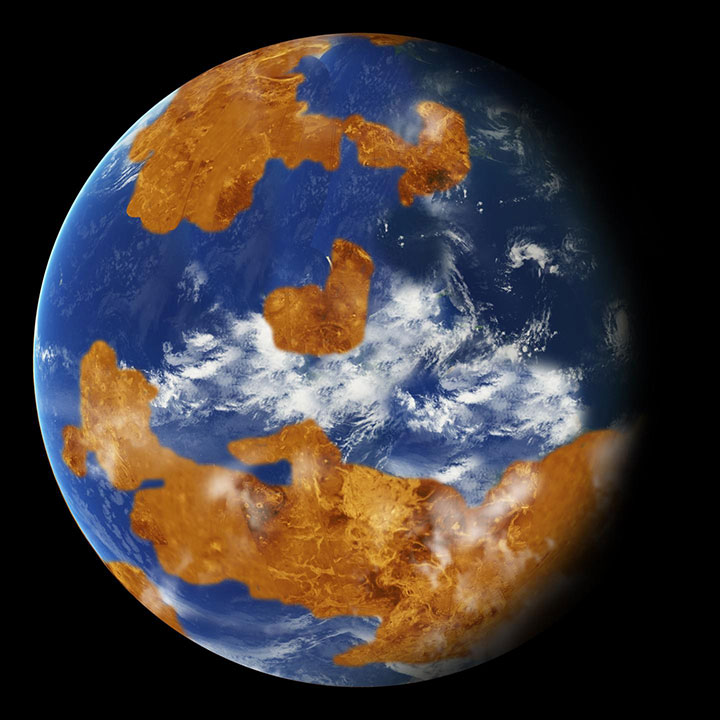Two billion years ago, our planetary neighbour Venus may have had an oceans of water and possibly life.

Today Venus is a highly inhospitable planet. Though it is similar to our own in size and structure, it has what is referred to as a runaway greenhouse effect: with carbon dioxide and nitrogen trapping heat and creating temperatures that are hot enough to melt lead (462 C). It also has clouds of sulphuric acid droplets and rotates backwards compared to the rest of the planets in our solar system.
READ MORE: Venus’ twin? Earth-size planet is hot, may have atmosphere
But a new study by scientists at NASA’s Goddard Institute for Space Studies (GISS), published this week in the journal Geophysical Research Letters, found evidence to suggest that Venus could have been the first habitable planet in our solar system.
It’s believed that Venus formed out of ingredients similar to that found on Earth, and early missions to the planet suggested that it may have once possessed an ocean.
So why didn’t we think it was habitable before?
The problem is, that because Venus receives much more sunlight than Earth (it is the second planet from the sun), ultraviolet radiation would have evaporated any available water, splitting the water droplets causing the hydrogen (remember that water is two parts hydrogen, one part oxygen) to escape into space.
And there’s more: at one time astronomers believed that the length of a planet’s day determined its habitability. They also thought that Venus’ thick atmosphere slowed down the rotation to its present rate: one day on Venus is equal to 117 Earth days. However, new data suggests that’s not true: a planet can rotate slowly with a thin atmosphere.
The GISS team theorized that at one time Venus had more dry land than Earth, particularly at the tropics. That would mean that less water would have evaporated, leaving enough water to support a lot of life.
So, using all this information, the GISS team simulated conditions where an early Venus had a shallow ocean, an Earth-like atmosphere, but with a day as long as its current one, as well as a sun that was 30 per cent dimmer than it is today.
“In the GISS model’s simulation, Venus’ slow spin exposes its dayside to the sun for almost two months at a time,” co-author and GISS scientist Anthony Del Genio said. “This warms the surface and produces rain that creates a thick layer of clouds, which acts like an umbrella to shield the surface from much of the solar heating. The result is mean climate temperatures that are actually a few degrees cooler than Earth’s today.”
Not only did the model conclude that Venus would be habitable, but it would have been habitable for up to two billion years.



Comments